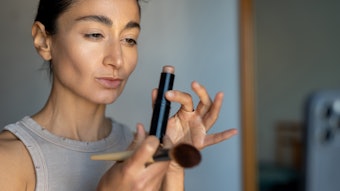- With global growth of 6% in 2012, color cosmetics proved resilient to recessionary pressure.
- Traditional products offering simple pigmentation appear to have had their day, and multifunctionality is now the norm.
- With multifunctionality comes the issue of a blurring of the boundaries between product categories.
- The growth prospects in emerging markets spell good news for color cosmetics, but opportunities in disparate markets also present the category with the ever-increasing challenge of dealing with greater diversity.
- BB creams have been a great success with consumers, recording a CAGR of 7% over 2007–2012, the second strongest growth rate in color cosmetics after nail care. Despite this success, BB creams account for a small share of overall facial makeup sales, with sales of $7 million in 2012 compared to $73 million for foundation and concealer products.
- BB cream’s impact has been far reaching, inspiring a whole new generation of multifunctional products in Western beauty markets.
- Lip care is expected to post strong growth in 2013, rivaling that of nail care, thanks to recent crossover innovations between lipstick, lip balm, lip gloss and lip liner.
With global growth of 6% in 2012, color cosmetics proved resilient to recessionary pressures thanks to an array of interesting launches. However, the innovations underpinning these launches are giving the industry a makeover.
With a new wave of changes sweeping across the industry, it poses the question of which direction the market is heading—it is not just novel product concepts shaping the market. Ethnic beauty, which has been somewhat inactive in terms of launches from mainstream brands, is gradually taking shape as emerging markets wake up to the charms of color cosmetics. The contribution of the emerging markets to the global growth of color cosmetics in 2012 was 75%, half of which was accounted for by Brazil and China. Going forward, Africa and the Middle East are projected to have the strongest CAGR—6% over 2012–2017 in real terms—in color cosmetics.
Ethnic Beauty Rife With Challenges
The growth prospects in emerging markets spell good news for color cosmetics, but opportunities in disparate markets such as Brazil and China also present the category with the ever-increasing challenge of dealing with greater diversity.
Product usage varies from market to market, as do preferences for color palettes and textures. In 2012, growth in color cosmetics in China was led by facial and eye makeup, while in Brazil it was facial makeup and lip products. The Chinese prefer subdued colors, while Brazilians like bold and bright shades. The greatest challenge, however, is in developing foundations to match the various different skin tones across the world, which requires sophisticated technology and is a costly process. After nine years of research, Yves Saint Laurent’s (YSL) Le Teint Touche Éclat foundation was launched into more than 7,000 global skin tones to create the perfect 22 shades to reflect the full range of skin tones from around the world.
Despite the challenges, there have been some launches that cater to ethnic beauty and cultural concerns. Inglot, a Polish color cosmetics manufacturer, launched a nail product that allows water to permeate through nails to comply with Islamic religious rituals. And Lancôme’s Teint Idole Ultra 24H foundations come in 18 different shades to cater to a wider group of ethnic consumers with different skin tones. Such launches, however, have typically been few and far between.
Innovations Center on Western Markets, Multifunctionality Driving Growth
Most innovations in color cosmetics continue to center on Western markets, which offer a better return due to higher per capita expenditure. Salon-inspired nail care in mainstream retail channels has been a key development. Over 2007–2012, nail care posted a stellar CAGR of 6%, compared to 2% for color cosmetics overall. Going forward (2012&nadsh;2017), however, nail care is projected for a slower 3% CAGR. This is not too surprising given that the category’s growth trajectory was boosted by short-term factors such as the novelty of funky nail art, which has enjoyed a significant boost from celebrity and media exposure. Multifunctional products, another innovation that became commonplace alongside nail care, are expected to have a long-term impact on the other hand.
The BB cream was the first in a series of products to spark the growth trajectory of the multifunctionality trend. The product was marketed as a primer, foundation, sunscreen, moisturizer and anti-ager all-in-one, and they have been a great success with consumers, recording a CAGR of 7% over 2007–2012, the second strongest growth rate in color cosmetics after nail care.
Despite this success, BB creams account for a small share of overall facial makeup sales. In Western Europe, according to Euromonitor International figures, other facial makeup, which mostly comprises BB creams, registered sales of $7 million in 2012 compared with $73 million for foundation/concealer. In the U.S., in 2012, the foundation/concealer category was nearly 10 times larger than other facial makeup.
The low penetration of BB creams is not just due to these products being new to the market but is also because they haven’t achieved the same status as in Asian markets, where they are used on their own and account for a greater proportion of total facial makeup sales. The BB frenzy in Western markets has been driven by the novelty factor and the creams’ time-saving attributes. In addition, there have been no visible signs of cannibalization—foundation/concealer has continued to post positive growth despite the BB frenzy. BB creams, however, are not at risk of disappearing from the marketplace. They will likely maintain a small presence thanks to their affordability and time-saving nature.
Multifunctionality Inspires New Generation of Products
In contrast with its weak penetration, BB cream’s impact has been far reaching, inspiring a whole new generation of multifunctional products in Western beauty markets. Even premium brands have begun to make similar claims but have altered their approach to the original concept of multifunctionality, given its mass/value positioning. Premium brands claim to incorporate additional benefits to create an improved visible finish. For example, Lancôme’s Teint Visionnaire is a foundation that offers coverage with anti-aging benefits. Clarins’ Extra Firming Foundation SPF15 claims to combine skin firming and age-fighting ingredients. The anti-aging ingredients are meant to be complementary to creating the impression of a younger-looking and radiant complexion.
Picking up on the multifunctionality trend, lip care is expected to post strong growth in 2013, rivaling that of nail care thanks to recent crossover innovations between lipstick, lip balm, lip gloss and lip liner. Multifunctionality in lipstick is not a novel concept. Chubby Sticks, a hybrid between lipstick and lip gloss, have been around for two years, but other brands are now picking up on this. Revlon launched Revlon ColorBurst Lip Butter, which claims to boosts lips’ moisture by 156% and comes in 20 different colors. Lumene launched Raspberry Miracle Lip Sorbet, described as a lip gloss pen with four features, including a lip liner, color, gloss and conditioner.
While all these launches claim to include crossover benefits, a new genre of products is now making its debut, claiming to not fit any of the current product classifications. The YSL’s Rouge Pur Couture Vernis à Lèvres website describes the product as neither a lip gloss nor a lipstick but a glossy stain barely felt on lips. Estée Lauder’s Smashbox has gone even further by launching an intuitive, smart formula, engineered lip gloss called O-Gloss Intuitive Lip Gloss, which generates a customized shade of pink based on the chemistry it shares with the host skin. All this indicates interest in lip care is set to regenerate.
Innovations Give Color Cosmetics a Makeover
With a surge of interesting launches ranging from multifunctional to smart formulas, the question is, which direction is the industry going? Traditional products offering simple pigmentation appear to have had their day. Multifunctionality is now the norm, but with multifunctionality comes the issue of a blurring of the boundaries between product categories. Is the industry witnessing a metamorphosis in which standard classifications such as lipstick and lip balm are at risk of becoming obsolete? YSL’s description of its Rouge Pur Couture Vernis à Lèvres as a “new movement in lip wear” point in that direction.
But it is not just traditional categories that are at risk of becoming obsolete. The pursuit for a natural look and feel are driving a new generation of skin care products that naturally illuminate skin and hide imperfections without needing any makeup coverage. L’Oréal RevitaLift launched Miracle Blur, which claims not to be a foundation or primer but can create smooth-looking skin by disguising lines, wrinkles, pores and uneven skin texture.
Could products such as Miracle Blur cannibalize color cosmetics as a whole? For the time being, the trend likely will remain confined to creating a natural look through ground-breaking innovations within color cosmetics.
Oru Mohiuddin is a senior analyst, beauty and personal care, at Euromonitor International. Contact her at [email protected].
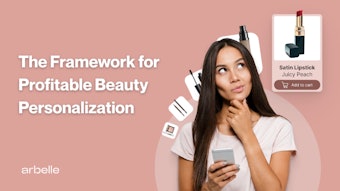
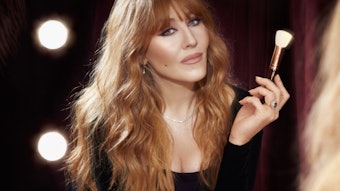
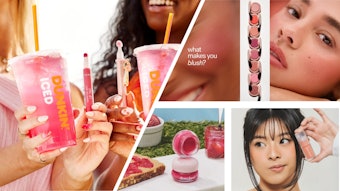



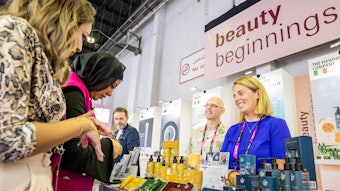

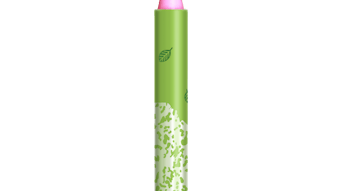
![According to the Personal Care Products Council, 'Between 1990 and 2022, the [U.S.] personal care products industry generated a trade surplus every year, reaching $2.6 billion in 2022...'](https://img.gcimagazine.com/mindful/allured/workspaces/default/uploads/2025/08/adobestock-353393403.MryFiCWzOJ.jpg?auto=format%2Ccompress&fit=crop&h=191&q=70&w=340)
